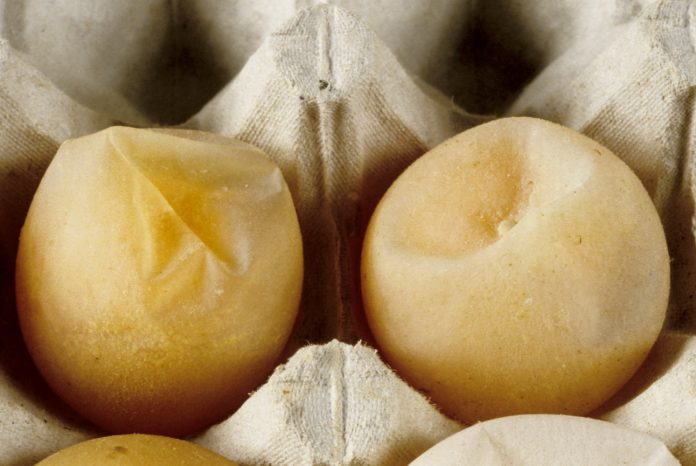Egg drop syndrome (EDS 76)
Occurrence: Worldwide, though not reported in chicks in US. The virus has been isolated from non-symptomatic migratory ducks in the US.
Species affected: Laying chickens, ducks, guinea fowl.
Age affected: Adult.
Causes: Avian adenovirus.
Effects: Incubation period is 7-9 days. Loss of colour in pigmented eggs, thin-shelled, soft- shelled or shell-less eggs and a reduction in production up to 40%. Watery albumin and reduction in egg size. Inappetance, dullness and diarrhoea may occur.
- Table of contents
- Causes
- Clinical signs
- Postmortem lesions
- Diagnosis
- Treatment & control
Causes
Egg drop syndrome is an acute to chronic disease affecting laying birds, ie. laying chickens, ducks and guinea fowl. It is caused by the avian adenovirus, which is 70-75nm in length. All chickens are susceptible, but brown layers are most susceptible.
It can spread vertically through the embryonated egg, by faecal-oral routes, and by contaminated water. Wild ducks, geese, gulls, owls, storks, swans and egrets can transmit the virus mechanically.
Clinical signs
There is a 7-9 day incubation period. Signs include loss of colour in pigmented eggs, thin-shelled, soft-shelled or shell-less eggs and a reduction in production up to 40%. Watery albumin and a reduction in the size of the egg, inappetance, dullness and diarrhoea may occur.
.jpg)
Postmortem lesions
Lesions include inactive ovaries and atrophied oviducts, uterine oedema, exudate in the shell gland, flaccid ovules and a mild splenomegaly (enlarged spleen).
Diagnosis
Clinical signs, gross lesions, and inclusion bodies in the epithelial cells of the shell gland are diagnostic.
Isolation and identification of haemagglutination virus in embryonated duck eggs is also important.
Immunofluorescent staining of fluids with specific conjugated antisera, and the Haemagglutination-inhibition test and ELISA to check for antibody in blood are also helpful. It simulates IB.
Treatment & control
Prevention
Biosecurity is important. A killed vaccine can be given during the pullet-rearing phase to help prevent the disease.





